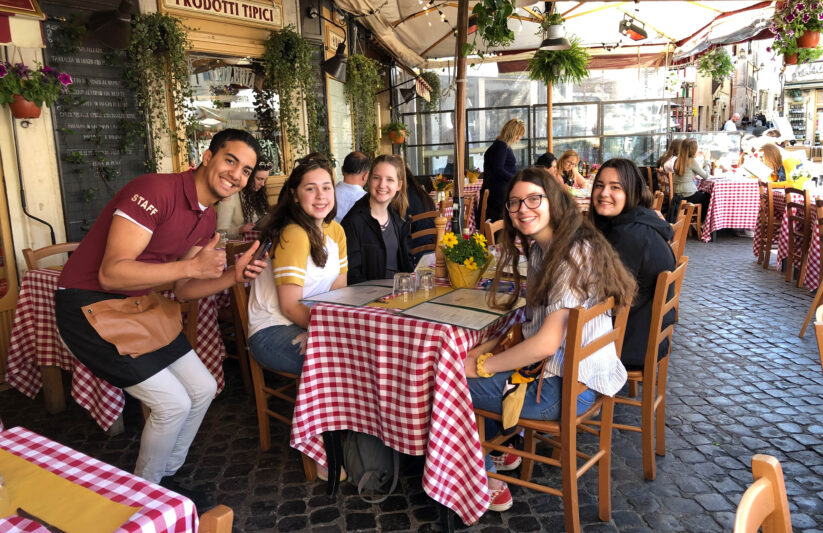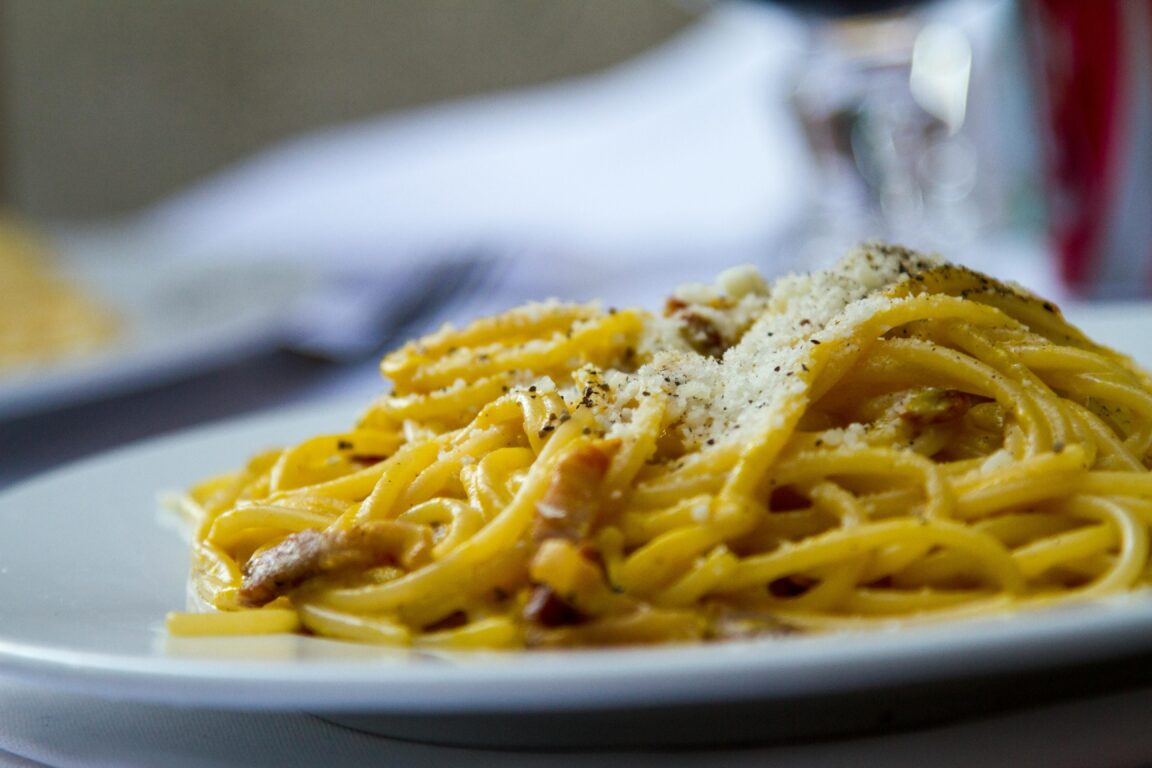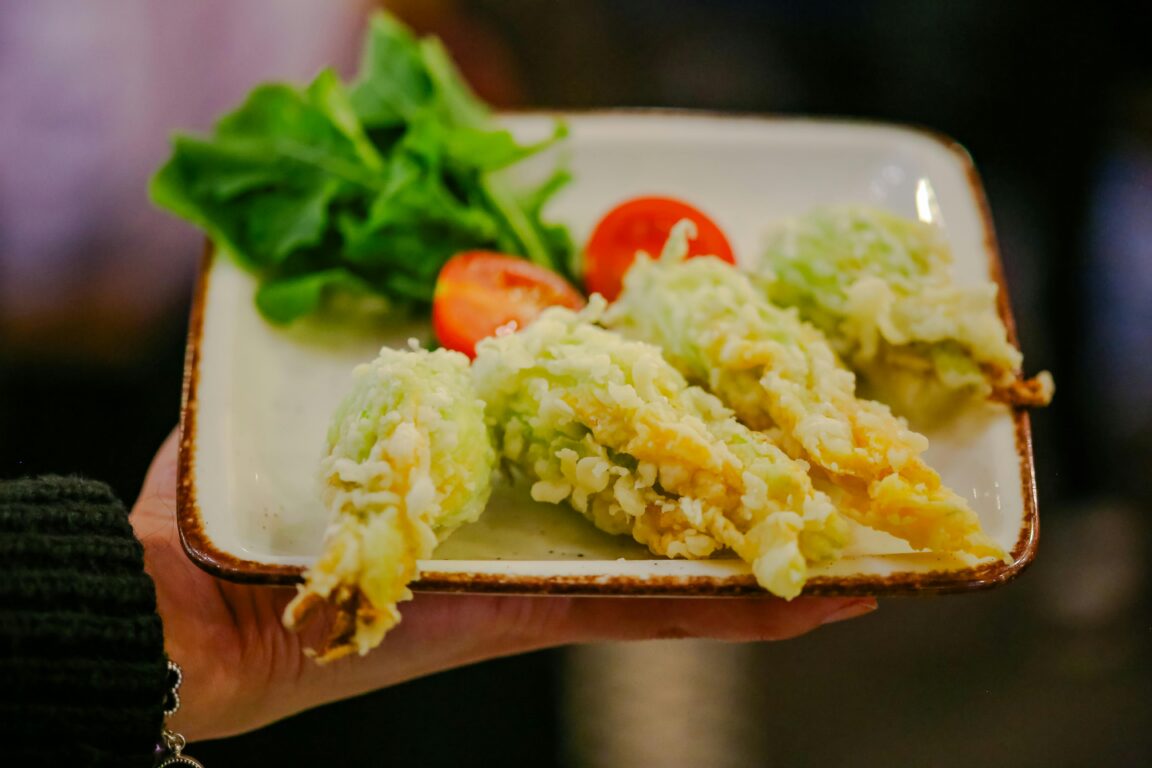Your Guide to Savoring the Best Food in Rome with ACIS

The Rich Culinary Heritage of Rome
Rome’s cuisine is deeply rooted in its history, influenced by its past and its position as a hub for different cultures. So many of the beloved culinary traditions we know in the United States have origins in the city’s antiquity: For example, did you know that the concept of a three course meal began in ancient Rome? There’s also connections back to familiar ingredients. Colatura di alici, or garum, was a salty fish sauce made with anchovies that gave ancient pasta dishes a tang, and food historians often think of this as the pre-cursor to Worchestershire. Most importantly, the Lazio region’s volcanic soil makes it a haven for fresh produce, including the beloved San Marzano tomatoes that inspire the cuisine, and you can see the influence of the land in every dish.
Famous Roman Dishes You Must Try
Pecorino Romano
This nutty cheese is one of the building blocks of Roman cuisine. You’ll see it absolutely everywhere, from antipasti and panini to many of the pasta dishes discussed below.
Pasta Carbonara
Carbonara, a silky sauce made from the simple combination of egg yolks, pecorino cheese, and guanciale, (beef jowl) is tossed with pasta noodles.
Pasta All’Amatriciana
Amatriciana sauce is for those who like a little kick in their red sauce. It’s a combination of tomatos, guanciale, and red pepper, and while garlic is generally accepted, onions are not!

Carciofi alla Giudia
Jewish culture deeply influences Roman cuisine, and no dish better represents the cultural meld then the traditional Carciofi alla Giudia. These fried artichokes dates back to a Jewish tradition from antiquity.
Cacio E Pepe
This dish translates to “cheese and pepper”, because those are the two main ingredients! Pasta is combined with pecorino cheese and a healthy dose of fresh ground pepper.
Pasta alla Gricia
One of Rome’s oldest traditions, Pasta alla Gricia combines pecorino, black pepper and guanciale. It’s a little Cacio E Pepe, a little Carbonara.
Fiori di Zucca
Zucchini blossoms are a delight and should definitely be sampled when in Rome. They are frequently stuffed with meats and cheeses and fried to a golden brown.
Gnocchi Alla Romana
Gnocchi potato dumplings are eaten across Italy but the Roman version has two unique qualities: They are made with semolina flour and they’re usually reserved for eating on Thursdays!

Roman-Style Pizza: Thin, Crispy, and Irresistible
Roman pizza deserves it’s own section of mention. Not to be confused with nearby Neopolitan pizza, which is soft and fluffy as a whole, Roman pizza comes in two different forms. Pizza tonda is a whole pie featuring crispy, thin crust that comes from adding oil to the dough. Then there is pizza al taglio, which is by the slice, and has a thicker texture closer to foccacia. This style typically comes in a square or rectangular shape and can easily be grabbed on-the-go.
Some popular Roman-style pizza toppings include:
- Margherita – Fresh mozzerella, tomatoes, and basil
- Bianca – A “white sauce” of olive oil, garlic, and cheese
- Con Patate – Thinly sliced potatoes topped with cheese and rosemary
Sweet Treats and Desserts: Roman Pastries and Gelato
Save room for dessert because Rome is full of sweet treats. Italian breakfast is usually on the sweeter side as a rule, so you can find pair your morning espresso with pastries like Sfogliatella and Cornetto. When the Roman sun starts beating down in the afternoon, you’ll want to cool off with the famous gelato, ice cream that has a higher sugar content and lower butter fat. After dinner, nothing is better than dipping into tiramisu, layers of espresso-soaked ladyfingers, marscapone cream, and cocoa powder. And then what’s one more gelato to cap off the evening as part of your passeggiata?

Tips for Eating Like a Roman
Later Dining Hours – Like many other European culinary traditions, an Italian dinner starts later than in the United States, and it’s not uncommon to see patrons sitting down at 9 or 10 at night. Don’t worry, though: On your ACIS Tour, you’ll eat closer to the traditional 7 PM dinner hour.
Eat Lunch, Then Rest – An afternoon nap is traditional following the lunch hour. You may find shops and restuarants closed as locals take a break.
Save Cappuccinos for the AM – It is highly uncommon to order a Cappuccino during or after the evening meal.
Just Keep Twirling – Don’t cut your spaghetti strands with a knife! Twirl the pasta with a fork until you find the end of the strand and then eat.
Ready to experience the best food in Rome for yourself? Discover ACIS Tours’ itineraries! Our culturally immersive tours are packed with culinary exploration and authentic meals that will give you a taste of La Dolce Vita.










